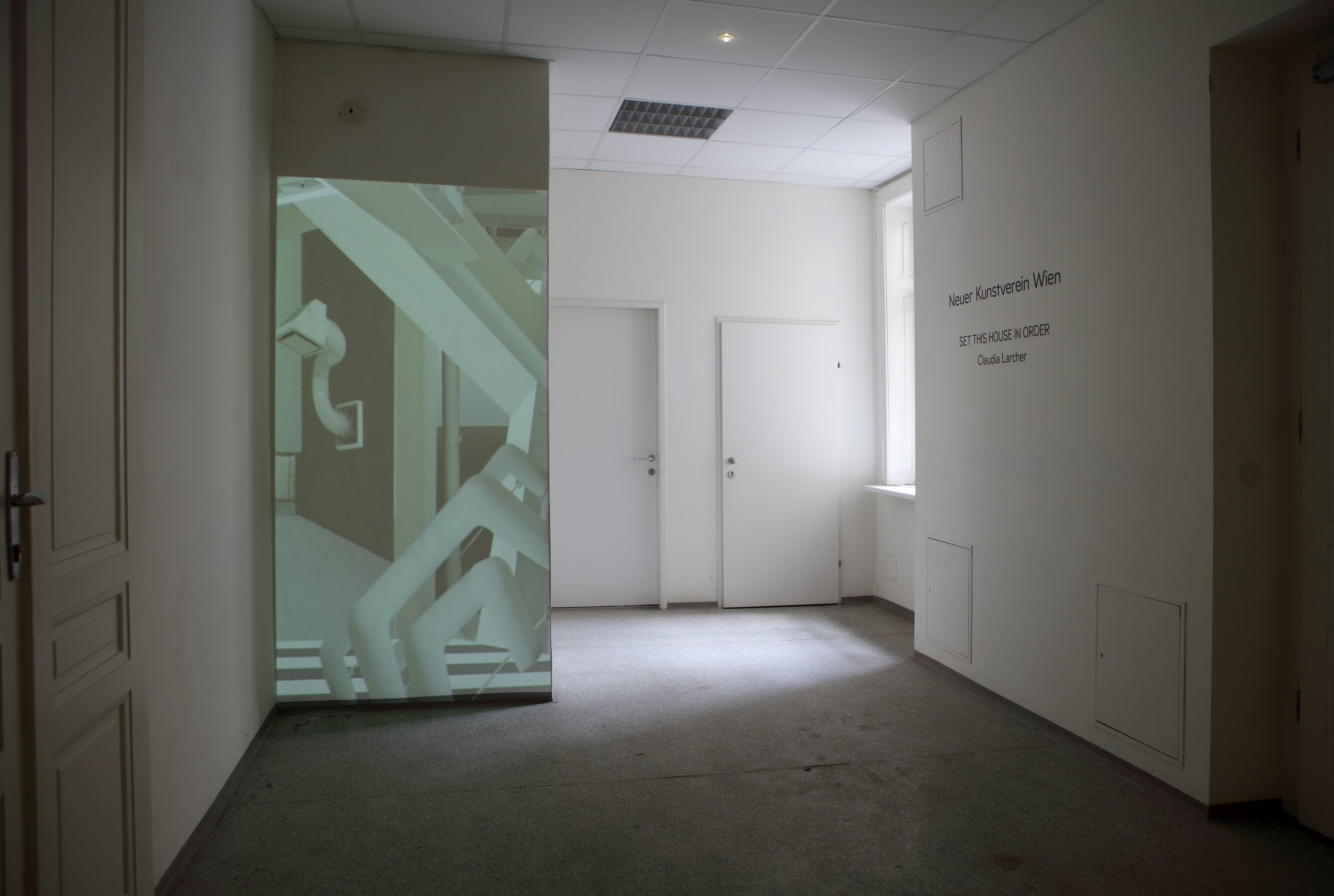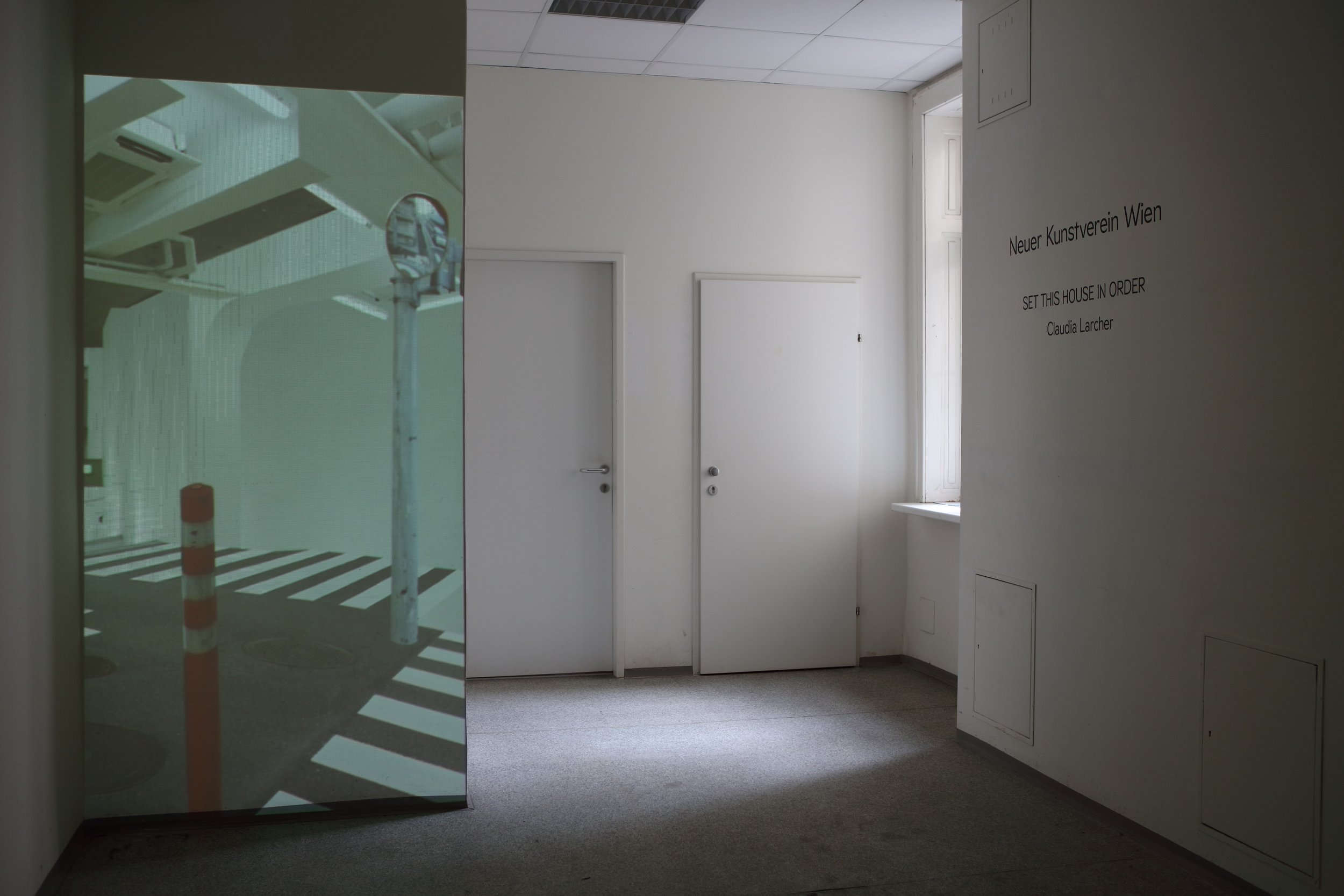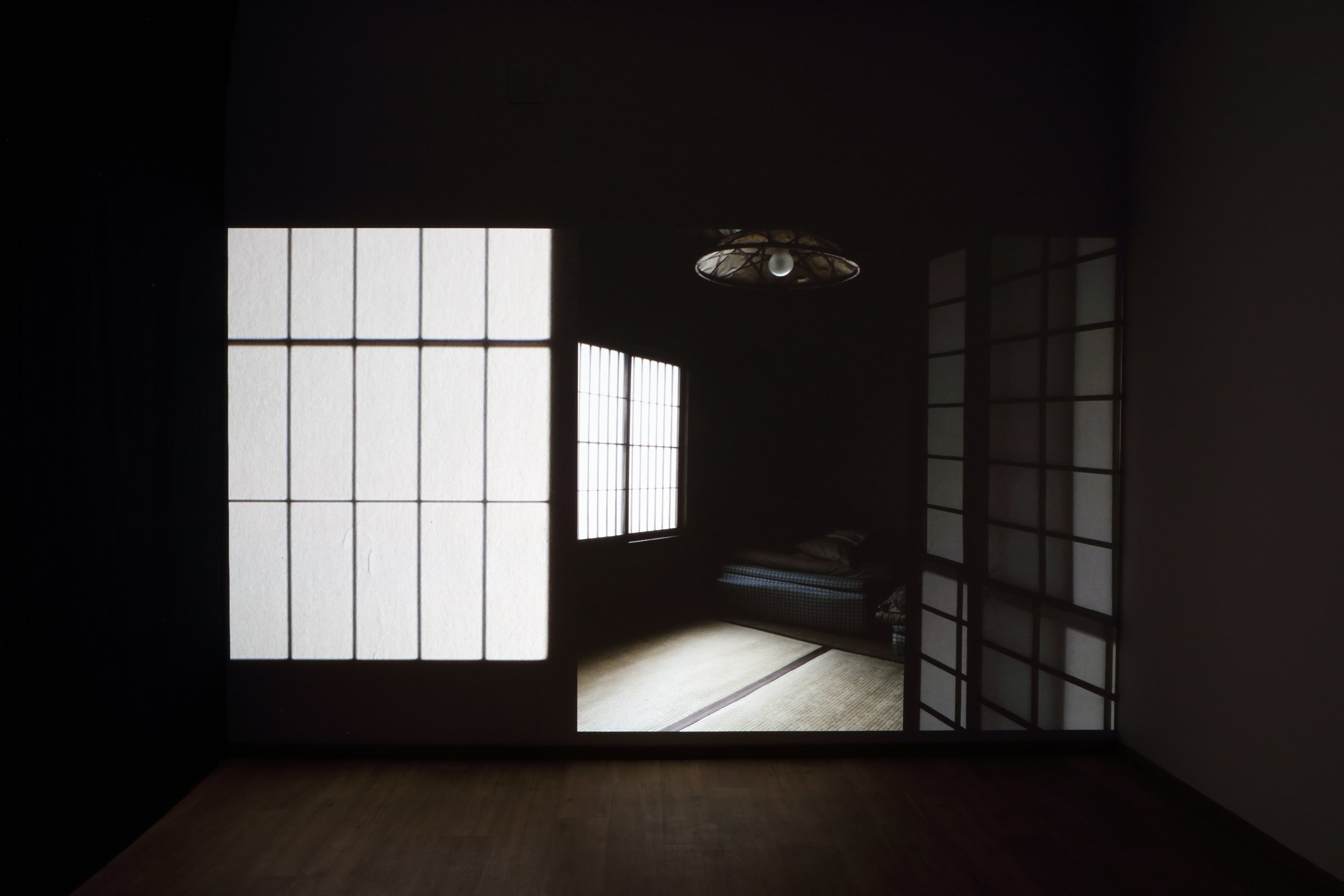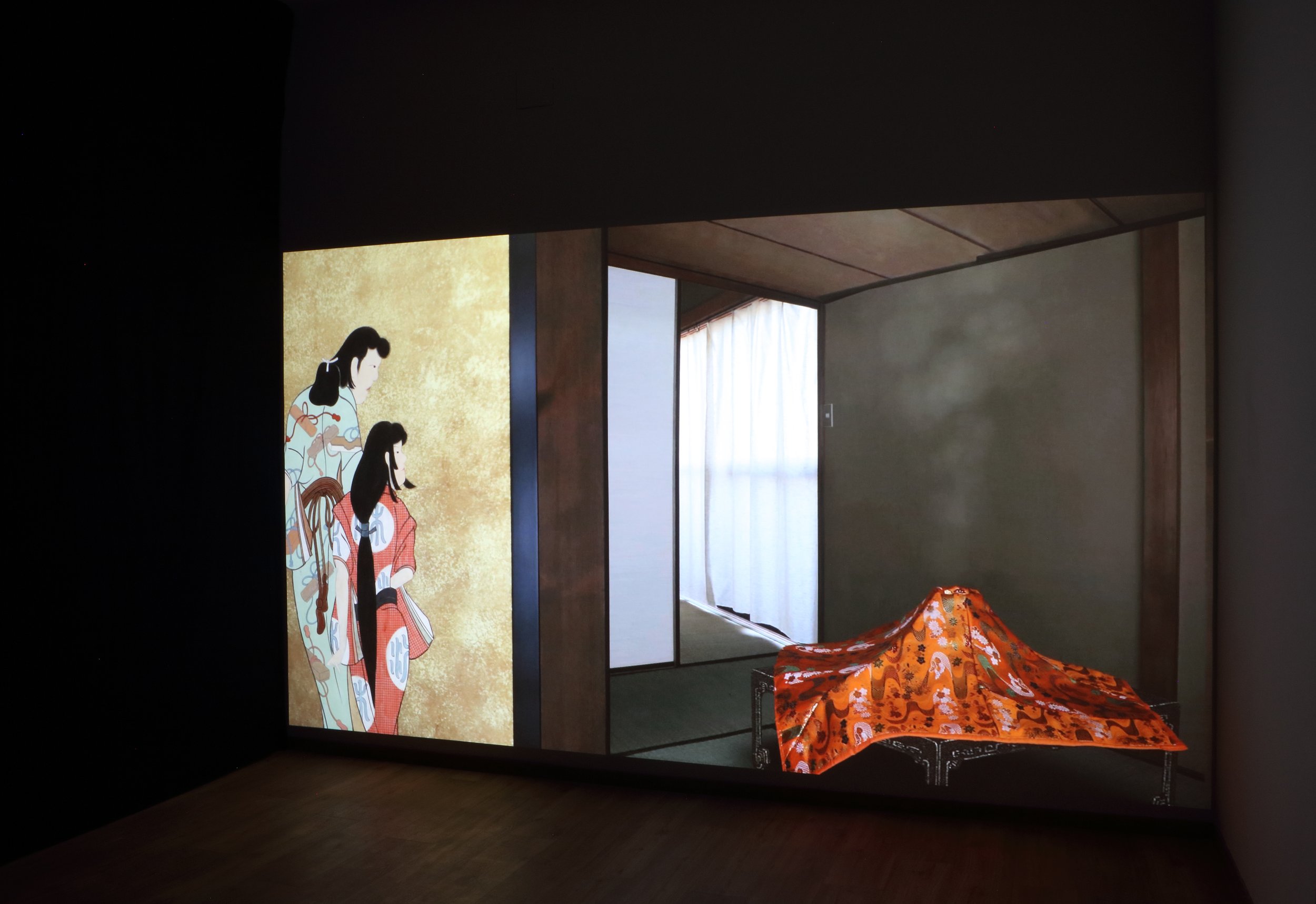Claudia Larcher - Set This House in Order
12.04.2019 - 09.05.2019, NKW - Neuer Kunstverein Wien / At
curated by Kasia - Matt Uszynska
Set This House in Order' is an exhibition in progress in which the artists Annja Krautgasser,
Claudia Larcher and Bernd Oppl enter into exchange in individual consecutive and complementary presentations. The artists deal with architectural, psychological and social spaces, which are contextualised in the new premises of the Neue Kunstverein Wien. The title of the exhibition, which refers to a literary source from Krautgasser's newly produced performative installation Rollenszenen (Role Scenes), comes from the crime novel 'Ich und die Anderen' (English OT 'Set this House in Order') by Matt Ruff, which tells the story of a man suffering from multiple personality disorder.
In her work, Claudia Larcher deals with spaces that for her are associated with a sense of home, familiarity and memory. Home' stands for identity, attachment and history in the sense of a lived past. The spaces the artist deals with are thus topographical realities on the one hand, and spaces of memory and imagination on the other.
The video animation 'Mies', 2016 is based on photographic views of Mies van der Rohe's buildings: details of interiors and lattice structures of entire façades are mounted on and over each other. In this video, as in the Mies series, Claudia Larcher sets in motion a complex alternation between two- and three-dimensionality.
The work 'Yama', 2010, which is part of the whole installation with collages and objects, offers a glimpse into the rooms of a traditional Japanese house by means of a fictitious tracking shot. Tatami rooms and shojis meet kimono and koi. The video is a collage of fragments from various rooms that the artist inhabited during her stay in Japan. The work was condensed with excerpts from old ukiyo-e's and scenes from Kabuki theatre.
In her site-specific video animation 'Hongo', 2011 Claudia Larcher uses footage she shot in or around the exhibition space of the Tokyo Wonder Site in Hongo. In a collage-like manner, she assembles photo and video material in digital processing. In the exhibition space, the projection creates perspective shifts of the spatial architecture or doublings by placing the projection of architectural details next to real structures.








